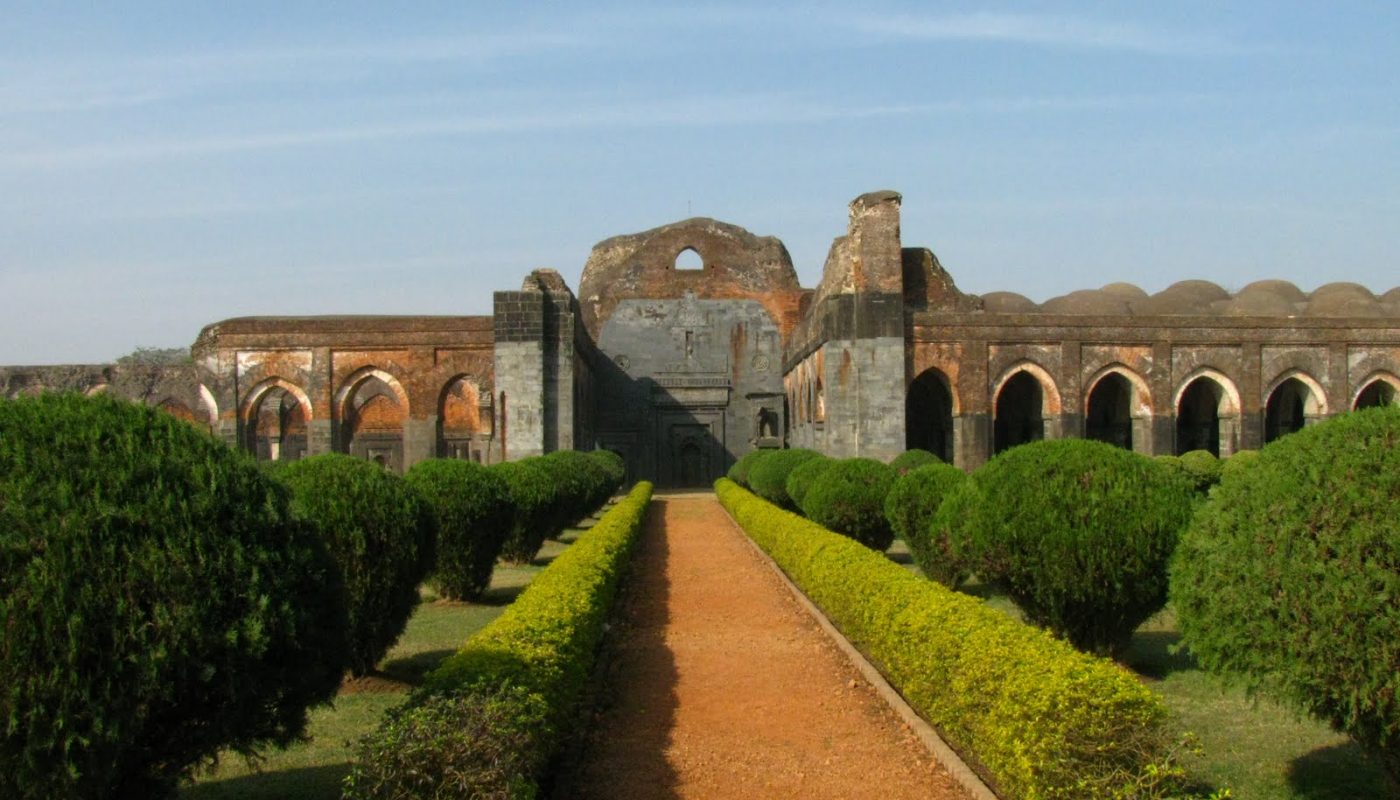Top Tourist Attractions in Malda
Malda district, often spelled Maldah or Maldaha, is located north of Kolkata, West Bengal’s capital. The most prominent products of this district are mango, jute, and silk. Malda was the centre of thriving cotton and silk industry in the 18th century. Rice, jute, legumes, and oilseeds are grown in the region. Mangoes and mulberries are also popular in Malda.
Best Places to Visit in Malda
- Ramkeli
- Gour
- Baroduari / Boro Sona Mosque
- Dakhil Darwaja
- Firoz Minar
- Chamkati Masjid
- Chika Mosque
- • Luko Churi Gate
- • Kadam Rasul Mosque
- • Kotwali Darwaja
- • Gumti Darwaza
- Adina
- • Adina Eco Park
- • Adina Deer Park
- • Hamamghar
- • Turkey Bath Room ( 17th Centuries)
- • Pandab Dallan Minar
- • Atbart Dighi.
- • Adina Mosque
- Pandua
- • Kutubshahi Masjid
- Jagjibanpur
Ramkeli
Ramkeli, a little village on the route to Gour, is well-known for being the temporary residence of Sri Chaitanya, Bengal’s renowned religious reformer, where he remained for a few days on his trip to Brindaban. A grove of two tamal and two kadamba trees, under which the saint is claimed to have pondered, may still be seen. Sri Chaitanya’s footsteps on stone may be found in a little shrine built beneath this tree. The temple is flanked by eight kundas, or tanks. Rupsagar, Shyamkunda, Radhakunda, Lalitakunda, Bishakhakunda, Surabhikunda, Ranjakunda, and Indulekhakunda are among them. Every year on Jaishthya Sankranti, ceremonies are held here to celebrate Sri Chaitanya’s entrance. On this day, a week-long fair also begins.
Gour
Gour rose to prominence as King Shashanka’s 7th-century capital, and it remained the capital of ancient Bengal for several decades.
- Baroduari / Boro Sona Mosque: The Baroduari mosque is located half a kilometre south of Ramkeli. This mosque is the greatest landmark in Gour, a massive rectangular edifice made of brick and stone. Despite the fact that the name means “Twelve Doors,” this monument only has eleven. This massive mosque, spanning 50.4 m by 22.8 m and 12 m in height, was begun by Allauddin Hussein Shah and finished in 1526 by his son Nasiruddin Nusrat Shah. The Indo-Arabic architecture and artistic stone carvings make Baroduari a popular tourist destination.
- Dakhil Darwaja: The Dakhil Darwaza, a magnificent gateway erected in 1425, is a significant Muslim landmark. This commanding edifice is more than 21 metres high and 34.5 metres broad, and is made of little red bricks and terracotta work. Its four corners are crowned by five-story-tall towers. It was formerly the main entrance to a fort, and it opens through the embankments that surround it. A 20-meter-high wall encloses the remnants of a historic palace in the fort’s south-east corner. Cannons were used to be shot from here in the past. As a result, the gate became known as the Salaami Darwaza.
- Firoz Minar: The Feroze Minar is around a kilometre distant from the Dakhil Darwaza. Sultan Saifuddin Feroze Shah erected it between 1485 and 1509. This five-story structure, which resembles the Qutb Minar, is 26 metres tall and 19 metres in circumference. The tower’s first three levels each feature twelve neighbouring faces, while the top two storeys are circular in form. The pinnacle of the tower is reached through an 84-step spiral staircase. Feroze Minar’s walls are adorned with beautiful terracotta decorations and built in the Tughlaqi style of architecture. This structure is also known as the Pir-Asha-Minar and the Chiragdani.Chiragdani.
- Chamkati Masjid
- Chika Mosque: The Chika Mosque was established in 1475 by Sultan Yusuf Shah. The name comes from the fact that it once housed a great number of chikas, or bats. It is a single-domed building that is now virtually in ruins. The exquisite carvings on the walls and depictions of Hindu idols on the masonry of doorways and lintels are still evident in parts. The mosque also has Hindu temple architecture.
- Luko Churi Gate: The Lakhchhipi Darwaza, also known as the Lukochuri Gate, is situated to the south-east of the Kadam Rasool Mosque. Shah Shuja is claimed to have erected it in the Mughal architectural style around 1655. The term was derived from a royal game of hide-and-seek that Sultan used to enjoy with his begums. According to another school of thought, it was erected in 1522 by Allauddin Hussein Shah. This double-storeyed Darwaza, located on the eastern flank of the royal palace, served as the principal entrance to the palace. It is an intriguing destination to visit because of its creative architectural style.
- Kadam Rasul Mosque: The Fateh Khan Tomb, a commander in Aurangzeb’s army, is located directly across from the Kadam Rasool Mosque. This intriguing edifice was constructed in the Hindu chala style. The exquisite Tantipara Mosque, with its elaborate terracotta design, is only a short distance away.
- Lattan Mosque: Lattan Mosque, tradition has it that this mosque was built by a royal court dancing girl. Historians say Sultan Shamsuddin Yusuf Shah erected it in 1475. Traces of elaborate mina work in blue, green, yellow, violet, and white may still be seen on the enamelled bricks along the exterior and interior walls. Because of the splendour of the colours, the Mosque is also known as the Painted Mosque. The arched ceiling of this mosque, which is supported by octagonal pillars, is another intriguing feature.
- Kotwali Darwaja
- Gumti Darwaza: The Gumti Darwaza, which stands to the north-east of the Chika Mosque, was erected in 1512 by Allauddin Hussein Shah. The artwork is made of brick and terracotta, and the originally vibrant colours woven into it are still partially visible. The ornaments are claimed to have been made of actual gold. The Darwaza, on the other hand, is currently closed to the public.
Adina
(Situated at 15 km north of Malda town)
- Adina Eco Park : Adina is a village in Pudua Gram Panchayet, Gazole Dev. Block is a historically significant location. The remnants of the “Adina Mosque” can be found here. Built around the 14th century during the reign of Sikandar Shah of the Bengal Sultanate, it is a popular tourist site in the Malda District. Throughout the year, people from far and near come to see the location.
- Adina Deer Park: Adina Deer Park is located in West Bengal’s Malda district, 21 kilometres from the district headquarters of Malda. The park is an important breeding ground for cheetal or spotted deer in the state, and their numbers can sometimes overflow. There is also a nilgai population in the park. Despite its name, the deer park occupies only a small portion of the land and is enclosed by an orchard plantation. The woods are teeming with butterflies and birds, including Asian openbill, paradise flycatcher, prinia, oriole, fish eagle, and others.
- Hamamghar
- Turkey Bath Room ( 17th Centuries)
- Pandab Dallan Minar
- Atbart Dighi.
- Adina Mosque: Adina Masjid, built in 1369 by Sultan Sikander Shah. One of the largest mosques in India, it also typifies the most developed mosque architecture of the period, the orthodox design being based on the great 8th century mosque of Damascus. Carved basalt masonry from earlier Hindu temples is used to support the 88 brick arches and 378 identical small domes.
Pandua
( Situted at 18 Km north of Malda town)
- Kutubshahi Masjid : The Qutb Shahi Mosque, also known locally as the Chhoto Sona Masjid, was established to honour the saint Nur Qutb-ul-Alam. The remnants of his shrine, as well as those of Saint Hazrat Shah Jalal Tabrizi, lie close, and are known as the Bari Darga.
- Eklakhi Mausoleum : The Eklakhi Mausoleum is Pandua’s most exquisite monument. It is the tomb of a Hindu Raja’s convert son, and it is one of Bengal’s first square brick tombs, with a carved Ganesh on the entryway.
Jagjibanpur
( Situated at about 30 km from Malda town towards south east on Habibpur Block)
The discovery of a 9th century copper plate charter in Malda showed that the Pala monarch Mahendrapala, who claimed to be Devapala’s son and successor, awarded Mahasenapati Vajradeva a plot of land on which to erect a monastery. Archaeologists discovered five significant mounds in and around the town of Jagjivanpur: Tulabhita, Akhridanga, Nimdanga, and Maibhita. Of them, Tulabhita is the largest and most magnificent, and was the first to be excavated. A brick-built monastery with its sanctuary, bastion-cum-cells, varandah, toilets, stairs complex, well, courtyard, and entrance was unearthed during the excavation. Archaeologists argue that the monastery is a replica of the famous Vikramsila Mahavihara. During excavation, a bronze figure of sitting Buddha in Bhumisparsha Mudra, another metal image of Buddhist Goddess Marichi, a large number of terracotta seals, plaques, semi-precious stone beads, and terracotta pot fragments were discovered.
Best Time to Visit in Malda
The ideal months to visit Malda in India are January to April and July to December.
How to Reach Malda
Malda is easily reachable by road and train from anywhere in India. It is 347 kilometres north of Kolkata and 256 kilometres south of Siliguri.
The District is bisected by the National Highway –34. Buses from the NBSTC, SBSTC, and CSTC, as well as several privately owned buses, travel between Calcutta and Malda. The buses take around eight hours to make the route from the Shahid Minar and Ultadanga bus terminals.
The Janasatabdi Express, the Gour Express, the Kanchenjungha Express, the Teesta Torsa Express, the Kamrup Express, the Hate Bajare Express, and the Darjeeling Mail, to mention a few, all stop in Malda on their way between Calcutta and New Jalpaiguri.

